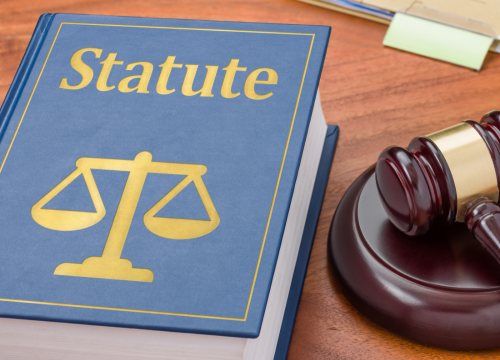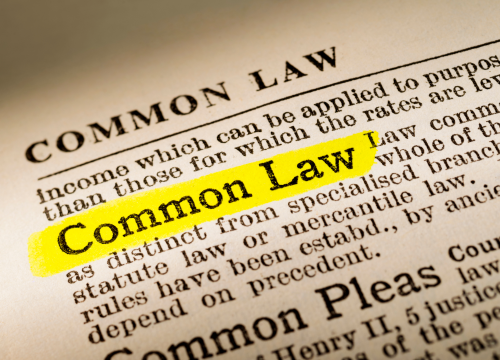
In the intricate web of legal systems, common law and statute law stand as pillars that support the structure of justice. While distinct in their origins and forms, these two legal frameworks share surprising similarities that contribute to the harmonious functioning of legal systems worldwide.

Binding Authority:
Common Law: Rooted in judicial decisions and precedents, common law derives its authority from the decisions of judges in previous cases.
Statute Law: Statutes, or laws enacted by legislative bodies, possess a binding authority that emanates from the democratic process.
Precedent Influence:
Common Law: Central to common law is the doctrine of precedent, where decisions from higher courts serve as guidance for similar future cases.
Statute Law: Legislators often draw inspiration from past statutes when crafting new laws, creating a similar sense of precedent within the legislative realm.
Evolutionary Nature:
Common Law: The evolution of common law is a gradual process, shaped by the accumulation of judicial decisions over time.
Statute Law: Legislative bodies adapt and amend statutes to address societal changes, reflecting an evolutionary nature comparable to common law.
Interpretation by Courts:
Common Law: Judges play a crucial role in interpreting and applying common law principles to specific cases, contributing to the ongoing development of legal doctrines.
Statute Law: Courts interpret statutes to ensure their application aligns with the legislative intent, providing a dynamic aspect to statutory law akin to common law.
Here’s a simplified table highlighting the similarities between common law and statute law:
| Similarities | Common Law | Statute Law |
|---|---|---|
| Binding Authority | Derived from judicial decisions and precedents. | Rooted in laws enacted by legislative bodies. |
| Precedent Influence | Relies on precedent, with decisions of higher courts as guides. | Legislators draw inspiration from past statutes as precedent. |
| Evolutionary Nature | Evolves through gradual development based on judicial decisions. | Legislative bodies adapt and amend statutes to address changes. |
| Interpretation by Courts | Judges interpret and apply common law principles. | Courts interpret statutes to ensure alignment with legislative intent. |
In the complex realm of legal systems, common law and statute law share essential characteristics that underscore their interconnectedness. Both systems derive authority from established sources, rely on precedent, exhibit evolutionary traits, and require interpretation by legal authorities. Recognizing these similarities reinforces the notion that the legal landscape is a nuanced tapestry where seemingly disparate elements weave together to uphold justice and maintain societal order.
Q1: What is common law, and how does it derive its authority?
- A: Common law is a legal system based on judicial decisions and precedents. Its authority comes from the accumulated judgments of past cases, setting a foundation for future rulings.
Q2: How does statute law gain authority in legal systems?
- A: Statute law, or statutory law, gains authority through legislation enacted by governmental bodies. These laws are formally written and codified, representing the will of the legislature.
Q3: Do both common law and statute law rely on precedent?
- A: Yes, both common law and statute law exhibit a reliance on precedent. Common law uses past judicial decisions, while statute law often draws inspiration from existing laws when crafting new statutes.
Q4: How do these legal systems evolve over time?
- A: Common law evolves through the gradual development of judicial decisions, adapting to societal changes. Similarly, statute law evolves as legislative bodies amend or create new laws to address emerging issues.
Q5: Can courts interpret both common law and statute law?
- A: Yes, courts play a crucial role in interpreting both common law and statute law. Judges interpret common law principles to apply them to specific cases, while they interpret statutes to ensure alignment with legislative intent.
Q6: Is there a democratic aspect to the authority of common law and statute law?
- A: Yes, there is a democratic aspect to both. Common law reflects decisions made by judges within a legal system, and statute law represents the will of the people as expressed through elected legislative bodies.
Q7: Are there notable references that delve into the similarities between common law and statute law?
- A: Yes, references such as legal dictionaries like Black’s Law Dictionary and academic works like “Cases and Materials on Legislation” by Eskridge, Frickey, and Garrett can provide in-depth insights into these similarities.
Q8: How do common law and statute law contribute to the overall legal landscape?
- A: Both common law and statute law contribute to a nuanced legal landscape by providing stability, adaptability, and a framework for addressing legal issues within a society.
Q9: Do common law and statute law interact within legal systems?
- A: Yes, common law and statute law often interact within legal systems. For example, statutes may modify or clarify common law principles, and common law decisions can influence the interpretation of statutes.
Q10: Can the similarities between common law and statute law vary in different legal jurisdictions?
- A: Yes, the specifics of how common law and statute law operate can vary across different legal jurisdictions. While the fundamental principles may be similar, the application and nuances can differ based on legal traditions and systems.
Q11: Are there instances where common law and statute law conflict, and how is resolution achieved?
- A: Yes, conflicts can arise between common law and statutes. Courts typically resolve such conflicts by interpreting statutes in a way that harmonizes with common law principles or by acknowledging the supremacy of statutes in specific situations.
Q12: How do common law and statute law contribute to legal stability and predictability?
- A: Common law and statute law both contribute to legal stability by providing established rules and precedents. This stability, in turn, enhances predictability in legal outcomes, allowing individuals and businesses to make informed decisions.
Q13: Can common law and statute law adapt to technological advancements and societal changes?
- A: Yes, both legal systems demonstrate adaptability. Common law evolves through judicial decisions addressing contemporary issues, while statute law can be amended to reflect changes in society, including those driven by technological advancements.
Q14: In what ways do common law and statute law ensure fairness and justice?
- A: Common law promotes fairness by considering past decisions and principles, while statute law ensures justice by codifying rules that reflect societal values and standards agreed upon through democratic processes.
Q15: How do common law and statute law influence legal education and practice?
- A: Legal education often covers both common law and statutes, recognizing their interconnectedness. Legal practitioners navigate cases by considering both sources, ensuring a comprehensive approach to legal analysis and argumentation.
Q16: Can individuals use common law principles in the absence of specific statutes on certain matters?
- A: Yes, individuals can rely on common law principles when statutes are silent on specific matters. Courts often apply common law doctrines to address legal issues not explicitly covered by statutes.
Q17: Do common law and statute law apply in all legal systems globally?
- A: While common law and statute law are widespread, legal systems vary globally. Some jurisdictions may rely predominantly on one system, while others employ a combination or have unique legal traditions.
Q18: How do common law and statute law contribute to legal certainty?
- A: Common law provides certainty through established precedents, and statute law contributes by offering clear and codified rules. Together, they create a legal framework that fosters certainty and predictability.
Q19: Can common law principles influence the drafting of new statutes?
- A: Yes, common law principles can influence the drafting of statutes. Legislators often consider existing legal principles and court decisions when formulating new laws to maintain consistency and coherence within the legal system.
Q20: Are there ongoing debates or discussions about the relationship between common law and statute law in legal academia?
- A: Yes, legal scholars engage in ongoing discussions about the interplay between common law and statute law, exploring ways to harmonize and enhance the effectiveness of both systems in modern legal contexts.












Leave a Reply